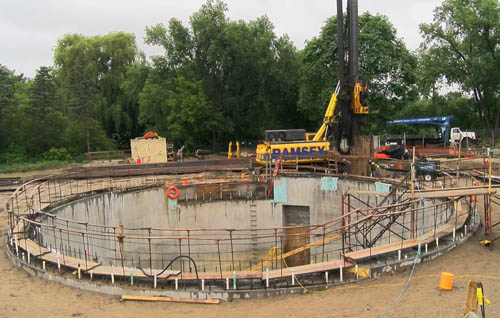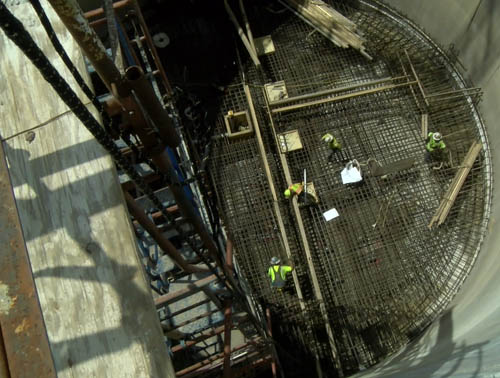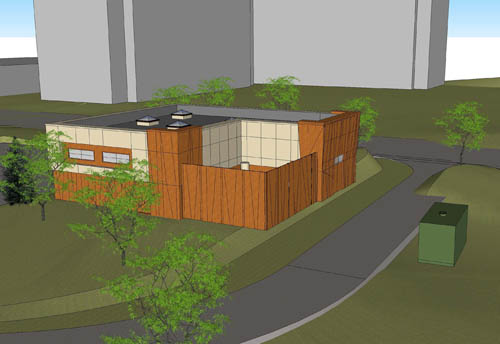Project is part of $1 billion regional capital improvement program
A large regional sanitary sewer project in Hopkins, dating back to 2015, is described as “replacing the existing lift station” and “building a new forcemain from the new lift station through the cities of Hopkins, St. Louis Park and Minneapolis.”
 But what does that mean to area residents and why does it matter?
But what does that mean to area residents and why does it matter?
To some, it may mean the unavoidable inconvenience of construction. But to all residents, the work of Metropolitan Council Environmental Services (MCES) means renewed wastewater infrastructure that will reliably protect public health and the environment—and support the region’s economic growth—for decades to come.
Lift stations and forcemains: What are they?
MCES relies on gravity as much as possible to carry wastewater from metro communities through regional sewers to treatment plants. When wastewater flow hits low spots, however, lift stations pump it to higher elevations where gravity can once again take over.
Lift stations pump wastewater into forcemains, which are designed and built to handle wastewater moving under pressure. This series of gravity and forcemain sewers transport the flow to treatment plants, which remove pollutants and release the cleaned water back into the environment, typically a river, and usually cleaner than the receiving water itself.
Out with the old, in with the new
Located along Minnehaha Creek, Hopkins sits at a lower elevation than its neighboring cities, so its wastewater flow needs a lift to keep it moving through St. Louis Park and Minneapolis before gravity moves it farther east to its final destination: the Metro Wastewater Treatment Plant in Saint Paul.
W hen the original lift station was built in the 1970s at the intersection of Blake Road and Lake Street in Hopkins, it needed only three pumps and a small brick building the size of a two-car garage.
hen the original lift station was built in the 1970s at the intersection of Blake Road and Lake Street in Hopkins, it needed only three pumps and a small brick building the size of a two-car garage.
But according to Dan Fick, an MCES engineer and project manager, the existing station is nearly 50 years old and reaching the end of its useful life. “Replacing the lift station will ensure safe and reliable wastewater service to the area for another 50 years or more,” said Fick.
MCES pumps as much as four million gallons of wastewater from Hopkins each day, an amount that would fill six Olympic-sized swimming pools. The new and larger lift station, currently under construction, is about 400 feet west of the original station, five stories deep and 54 feet across.
It will have four large pumps and a set of side-by-side forcemains to accommodate the region’s growing population and operate efficiently and reliably. The small building that will be built atop the station is designed to blend into the nearby park setting and won’t give a hint of the large structure beneath. The lift station is scheduled for completion in 2019.
Project completion is in sight
 Residents near the construction of the Hopkins lift station know these sewer improvements have been no small undertaking. The same holds true for residents of St. Louis Park and Minneapolis, where the rest of the approximately 4.5-mile forcemain replacement has taken place over several phases along the Highway 7/Lake Street corridor since 2011.
Residents near the construction of the Hopkins lift station know these sewer improvements have been no small undertaking. The same holds true for residents of St. Louis Park and Minneapolis, where the rest of the approximately 4.5-mile forcemain replacement has taken place over several phases along the Highway 7/Lake Street corridor since 2011.
Today, only three forcemain segments remain to complete the project. Two in Hopkins include a short section between the old and new lift stations and a quarter-mile section from Minnehaha Creek to Texas Avenue; both will be completed in 2019. The final five-block-long segment from east of Lake of the Isles to 27th Street in Minneapolis will begin in 2019 with completion in 2020.
Collaboration yields better project results
MCES worked with a large group of partners to synchronize the Hopkins portion of the sewer work with other needed road and utility work. MCES collaborated with the cities of Hopkins and St. Louis Park, Century Link, Hennepin County, the Minnesota Department of Transportation and Minnehaha Creek Watershed District to ensure a better outcome.
“Working closely with our partners results in greater efficiency and less impact on the community, something customers expect,” said Jeannine Clancy, Assistant General Manager, MCES.
MCES also worked extensively with nearby residents and businesses, providing open houses, a dedicated project website, numerous mailings and hand-delivered fliers to keep them informed on the project status and efforts to minimize construction impacts.
Needed improvements help preserve a top-notch wastewater treatment system
The $12 million Hopkins lift station and forcemain construction are part of the $77 million overall project spanning Hopkins, St. Louis Park and Minneapolis. The work is a portion of a 10-year, $1 billion regionwide MCES initiative that began in 2013 to accelerate the work of updating and improving aging wastewater collection and treatment facilities.
The region’s wastewater treatment system is heralded as one of the best in the country, with charges to customers that are among the lowest in the country compared with similar-sized systems.
To pay for investments in the regional system, MCES secures Minnesota Public Facilities Authority loans and/or issues bonds that are repaid with wastewater user fees that MCES collects from across the region.
The regional system collects and treats about 250 million gallons of wastewater a day from 109 metro area communities and 2.6 million residents. Wastewater is conveyed to the regional system of pipes and plants via about 5,000 miles of sewers that local communities own and maintain.
MCES officials estimate the replacement value of the region’s investment in eight treatment plants, 600 miles of interceptor pipe and metering and lift stations to convey wastewater flow at $7 billion.
More information
See details and updates about the Hopkins Lift Station Reconstruction project.